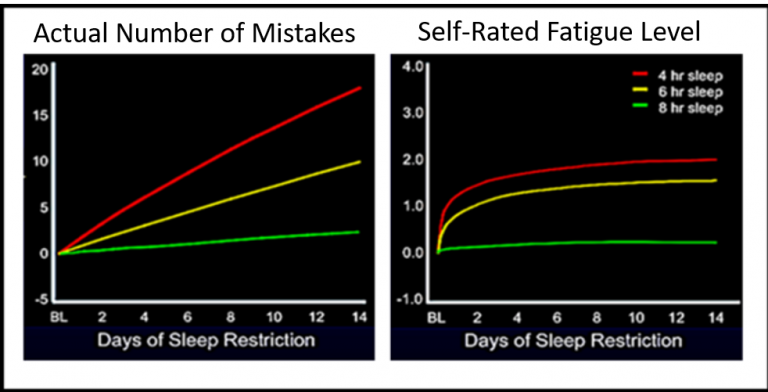Over the past few years, several of the Shipowners Club’s loss prevention initiatives have identified sleepiness and long-term fatigue as a major factor impacting accidents at sea. In order to understand this causation factor furthermore, the Club has collaborated with Sleep and Fatigue Research Ltd (Safr) on a project to investigate whether wearable technology can be used in the marine environment to address this risk.
Fatigue is widely acknowledged to be a problem in safety-critical industries. As a matter of fact, it can impact error rates, accident rates, health and well-being, as well as staff retention. It also affects cognitive ability, decision-making, risk behaviour, and much more.
The study found that workers who sleep less than five hours a night, are three times more likely to be involved in an accident. Namely, after 17 hours of being awake, performance can be reduced to the same extent as if the individual was over the drink-driving limit. Up to 25% of fatal road accidents are wholly or partly a result of driver fatigue (ROSPA / DfT).
It is now clear that lack of sleep is not just associated with increased rates of cancer, heart disease, stroke, obesity, diabetes, anxiety, depression, and many other physical and mental health problems; it has been shown to be a cause of them.
the Shipowners Club says.
What is more, scientific studies have also proven that it is not enough to simply ask an individual how they feel, as if someone is fatigued, their perception of their performance is often impaired. This is highlighted by the following graphs, which present the number of mistakes that are made as a result of restricted sleep (left graph) versus how an individual perceives their level of fatigue over the same duration (right graph).

Taking this information into consideration, one necessity emerges: The difference between how fatigued an individual thinks they are, in comparison to how fatigued they actually are, must be effectively measured, in order to manage fatigue.
[smlsubform prepend=”GET THE SAFETY4SEA IN YOUR INBOX!” showname=false emailtxt=”” emailholder=”Enter your email address” showsubmit=true submittxt=”Submit” jsthanks=false thankyou=”Thank you for subscribing to our mailing list”]
In order to mitigate this risk, Safr uses wearables, algorithms, a mobile app, and a management software to understand how fatigue manifests within a given organisation. This can make organisations proactively manage their fatigue risks. As a matter of fact, the studies that have been conducted so far show that in almost every situation, there is something that can be done to improve fatigue within an organisation.
In addition, several studies regarding the effect of fatigue in maritime, have highlighted the impact of:
- Long shifts: Shifts of 10 hours or more have caused worse levels of fatigue.
- Early shift start times: Shifts starting before 07:00 had a significant negative impact on fatigue levels.
- ‘Split’ shifts: These were associated with the very worst fatigue levels recorded.
- Duration of sleep: Many crew members obtained less than 4 hours of sleep, and a significant minority got less than 2 hours of sleep on at least one occasion during the 4-week study.





























































